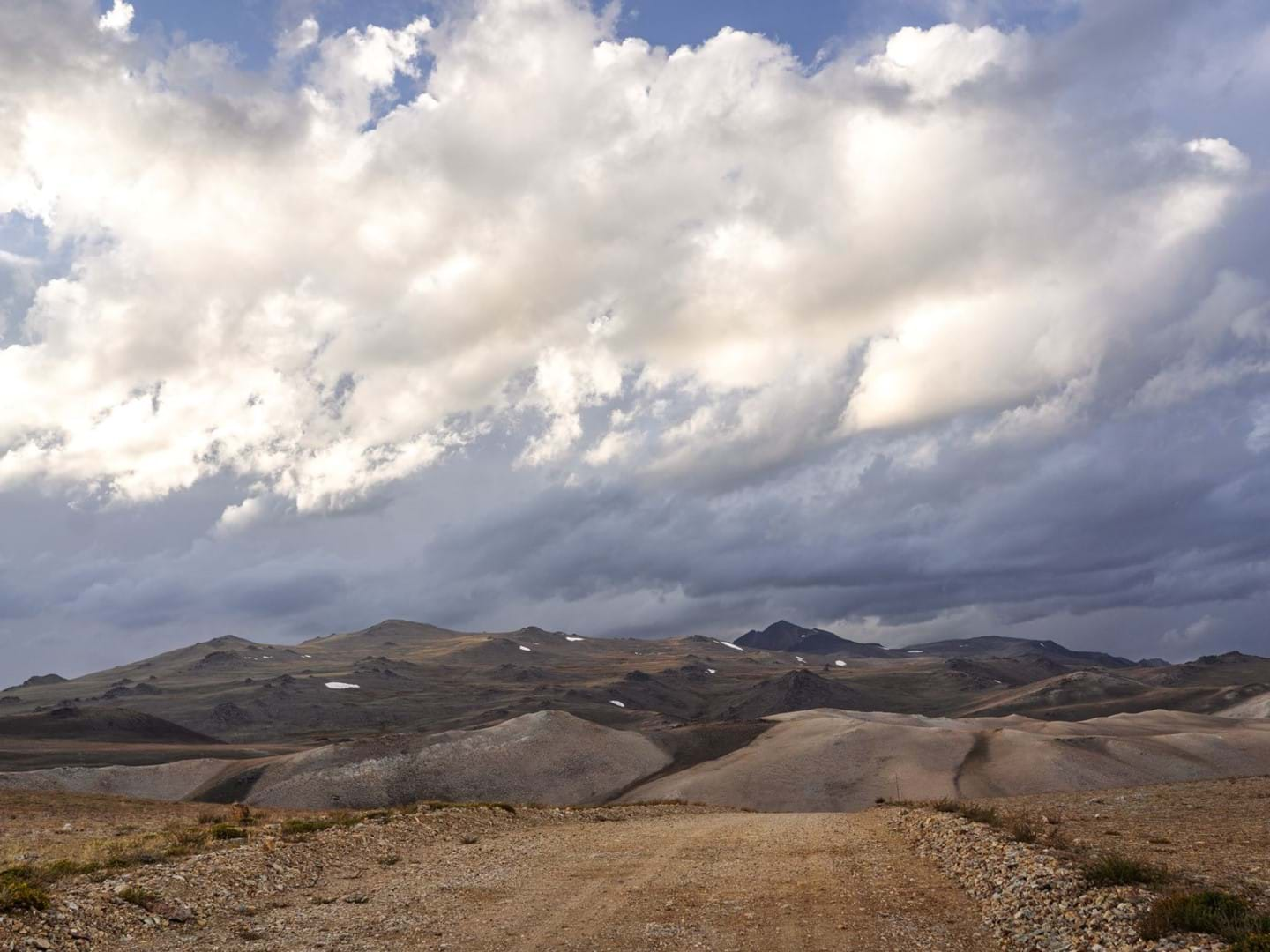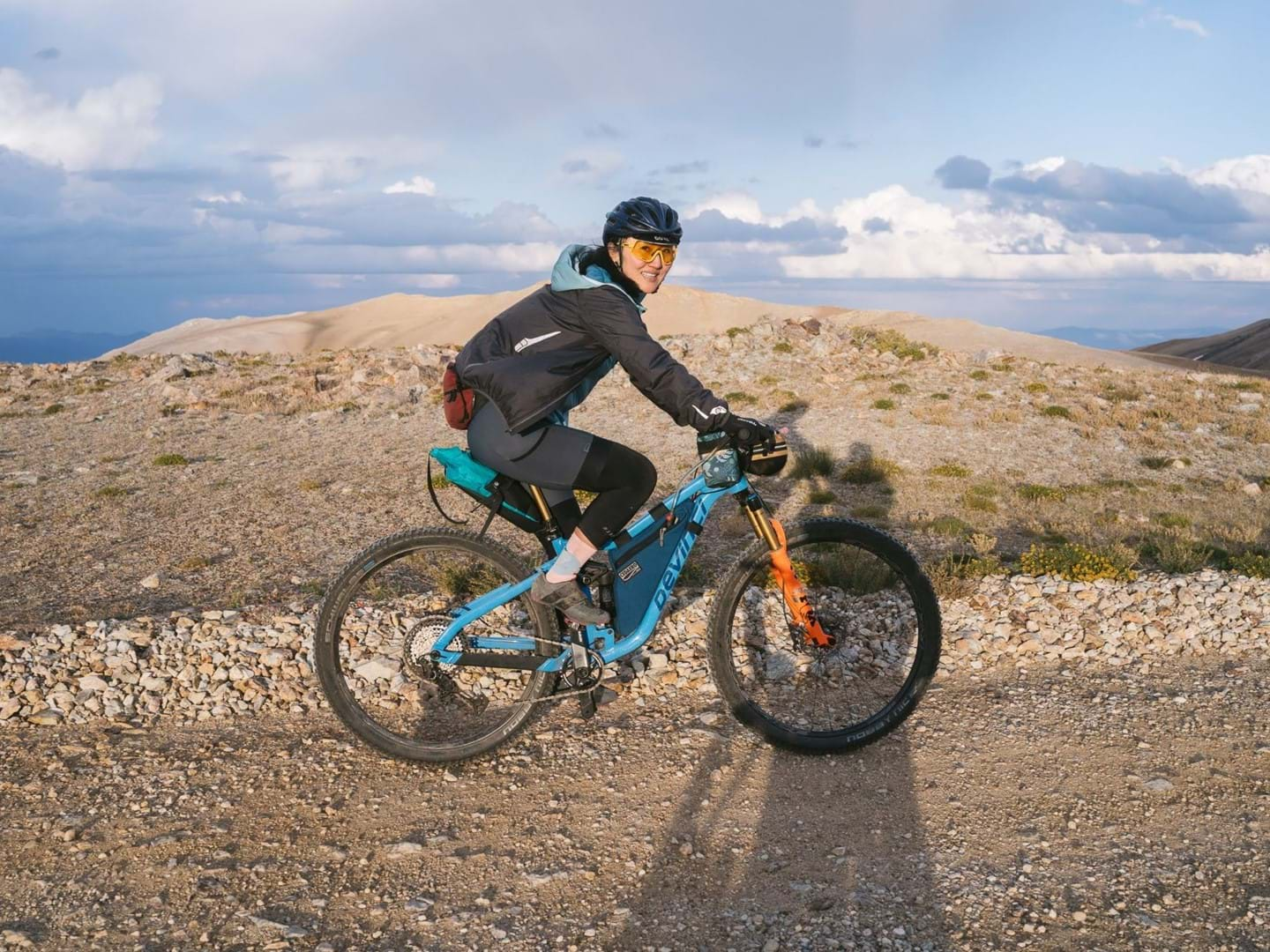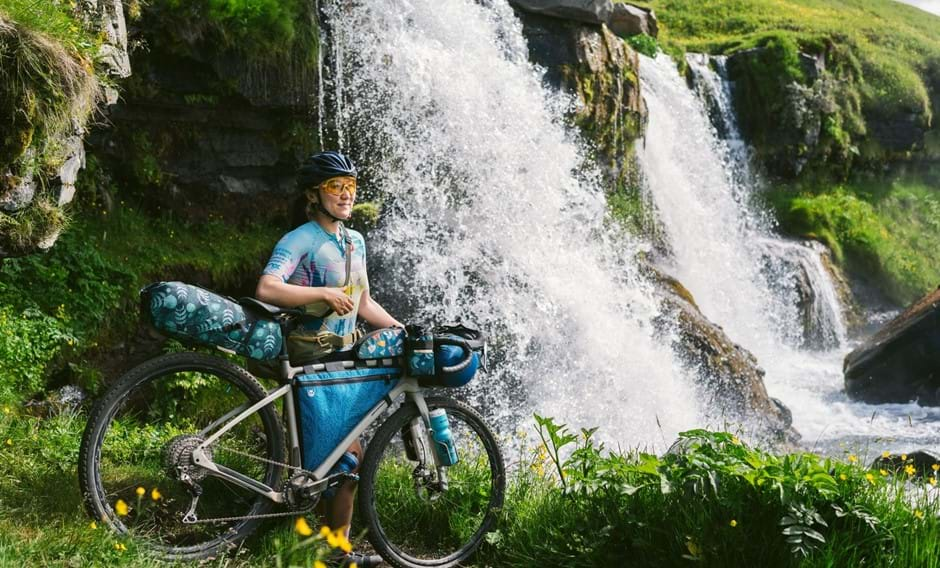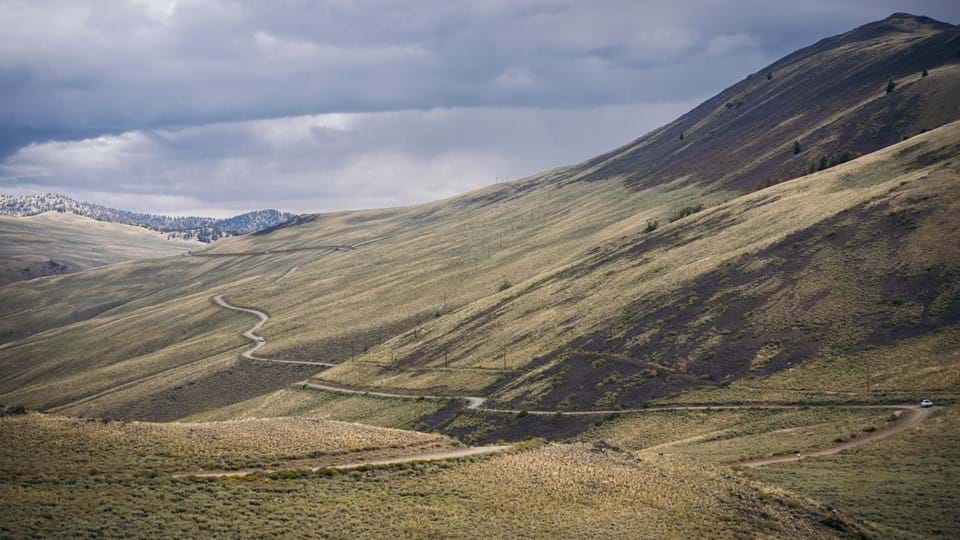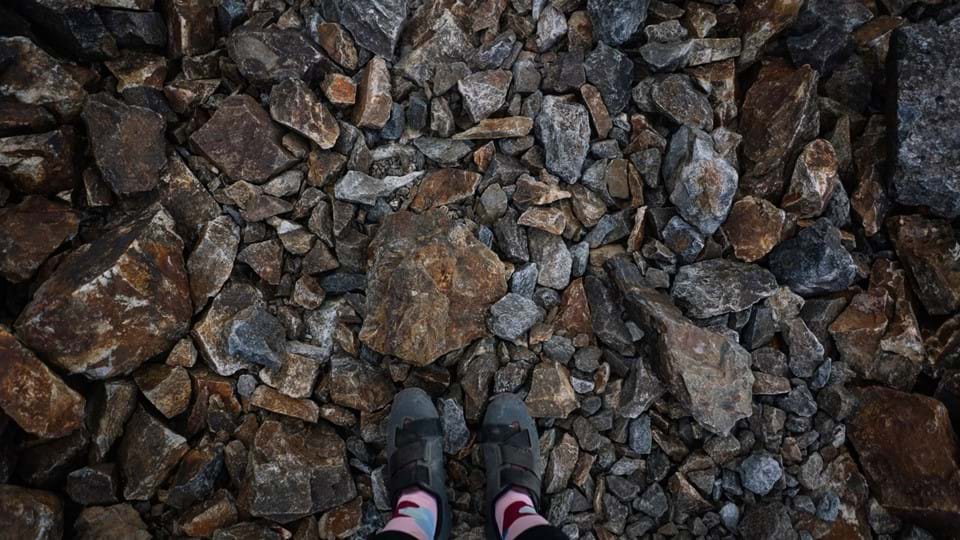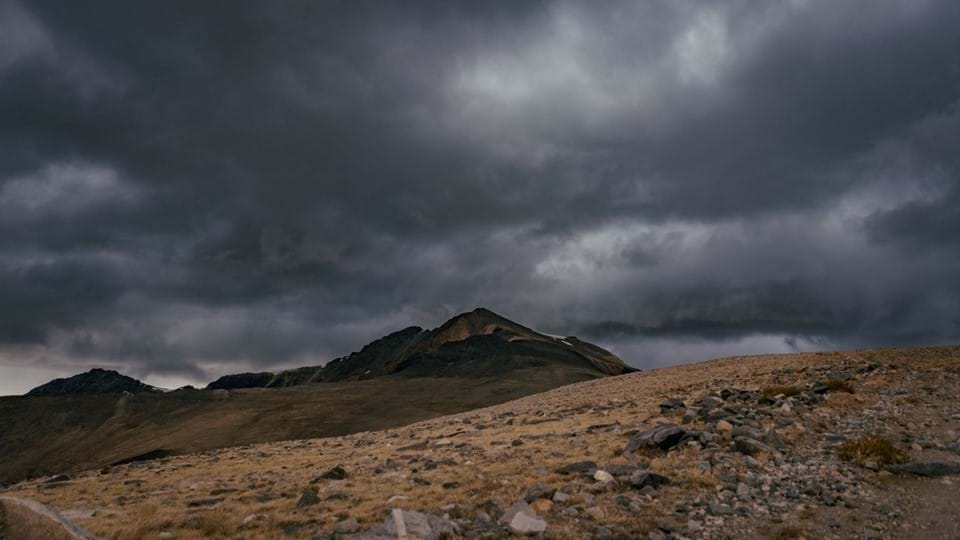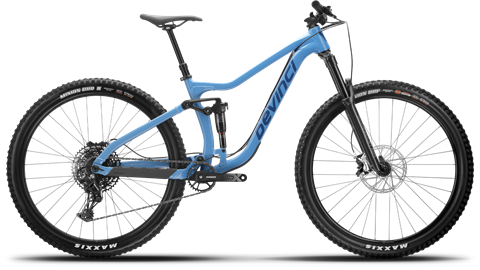Summiting White Mountain
Of the highest peaks in California, there is only one that can be summitted on a bike: White Mountain. Join our ambassador Emily Chen on her journey to conquer the 14,252 feet peak.
Text: Emily Bei Cheng | Photos: Emily Bei Cheng & Andy Wong
White Mountain
There are a dozen mountains in my home state of California that are over 14,000 feet tall. We call them "14ers" colloquially. Over the past few years of mountaineering, one by one I've climbed to the top of each summit: Mount Whitney, Thunderbolt Peak, Mount Shasta, Mount Tyndall, North Palisade, Split Mountain, and more ... there was only one mountain left: White Mountain. Of the list, White Mountain is thought of as the easiest 14er to summit, but there was a reason I was saving it for last. It's the only 14er in California that you can ride a bike to summit.

Red sky at night sailor's delight. Red sky in morning, sailor's warning.
A red sky indicates that the atmosphere is loaded with moisture particles. The color red dominates because red wavelengths are the longest on the color spectrum and they are able to make it through to our eyes, while shorter wavelengths, like blue, are likely to hit particles and be scattered before reaching us. As such, a fiery red morning sky may be a warning for wet skies and impending rain.

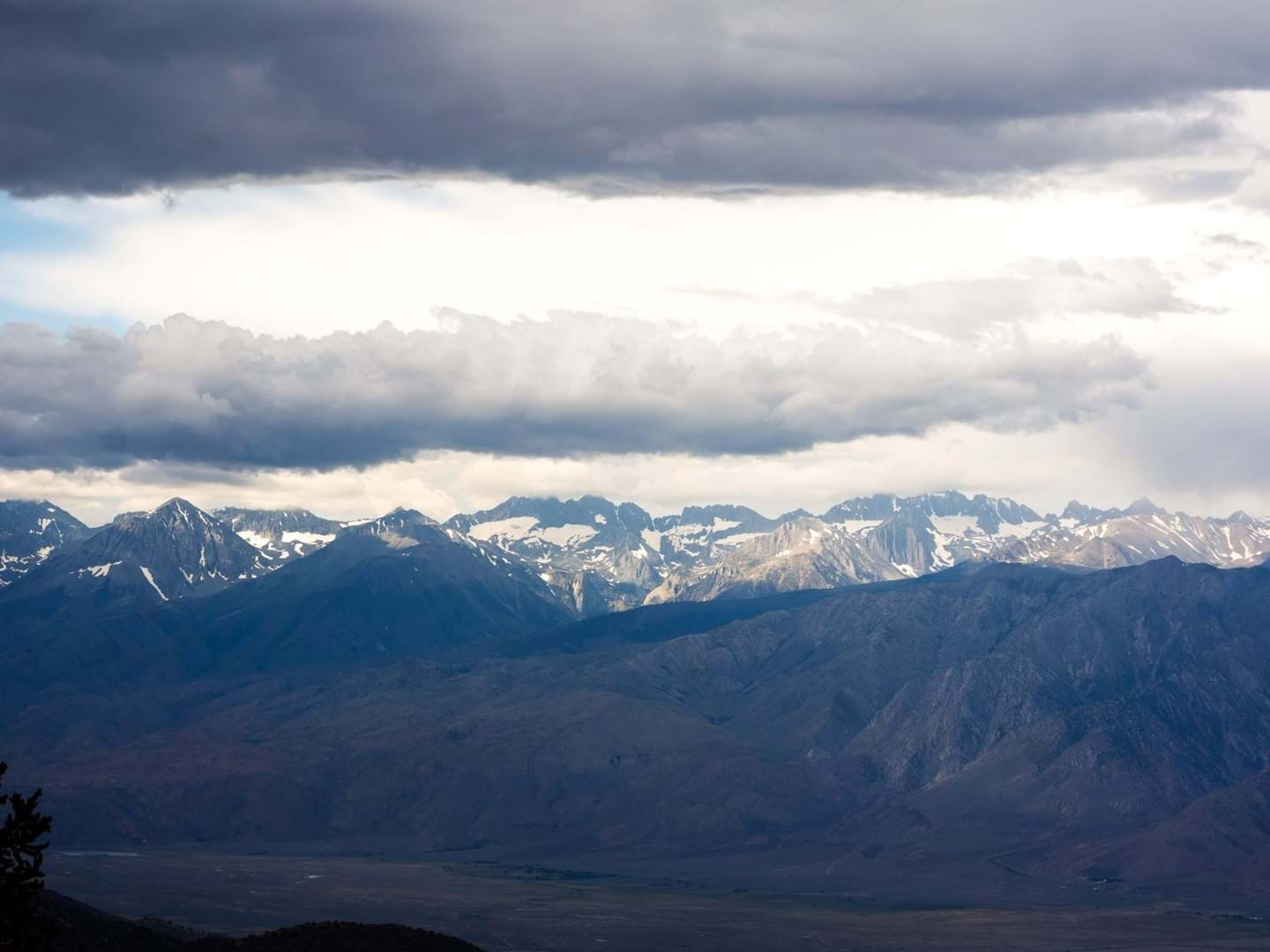
The Start
Now that the science lesson is done, let's get back to cycling. It started to rain lightly as we reached the start of the route at the Ancient Bristlecone Pine Forest Visitor Center. The route would be just over 45 miles with over 8,800 feet of elevation gain with several steep pitches, something I'd greatly prefer to do dry. But when the rain didn't cease, I threw on my rain jacket, hoisted my Marshall off the rooftop bike rack, and decided it was now or never...
The storm clouds around us made for a photographer's delight as we pedaled for a few hours, White Mountain yet in sight. A rainbow hinted at rainfall in the distance. I was relieved we hadn't seen any lighting because there were few places to seek protection in this barren alpine tundra biome.
We eventually reached Barcroft Station, a research station built at 12,470 feet to study the physiological effects of altitude to the peak. Indeed, we were really feeling the effects of altitude at this point. My bike was loaded with a bikepacking seat pack, frame bag, and handlebar bag to carry all the gear, food, and water I'd need for this ride, so every pedal stroke felt especially effortful. The air was thin and my heart rate was through the roof.
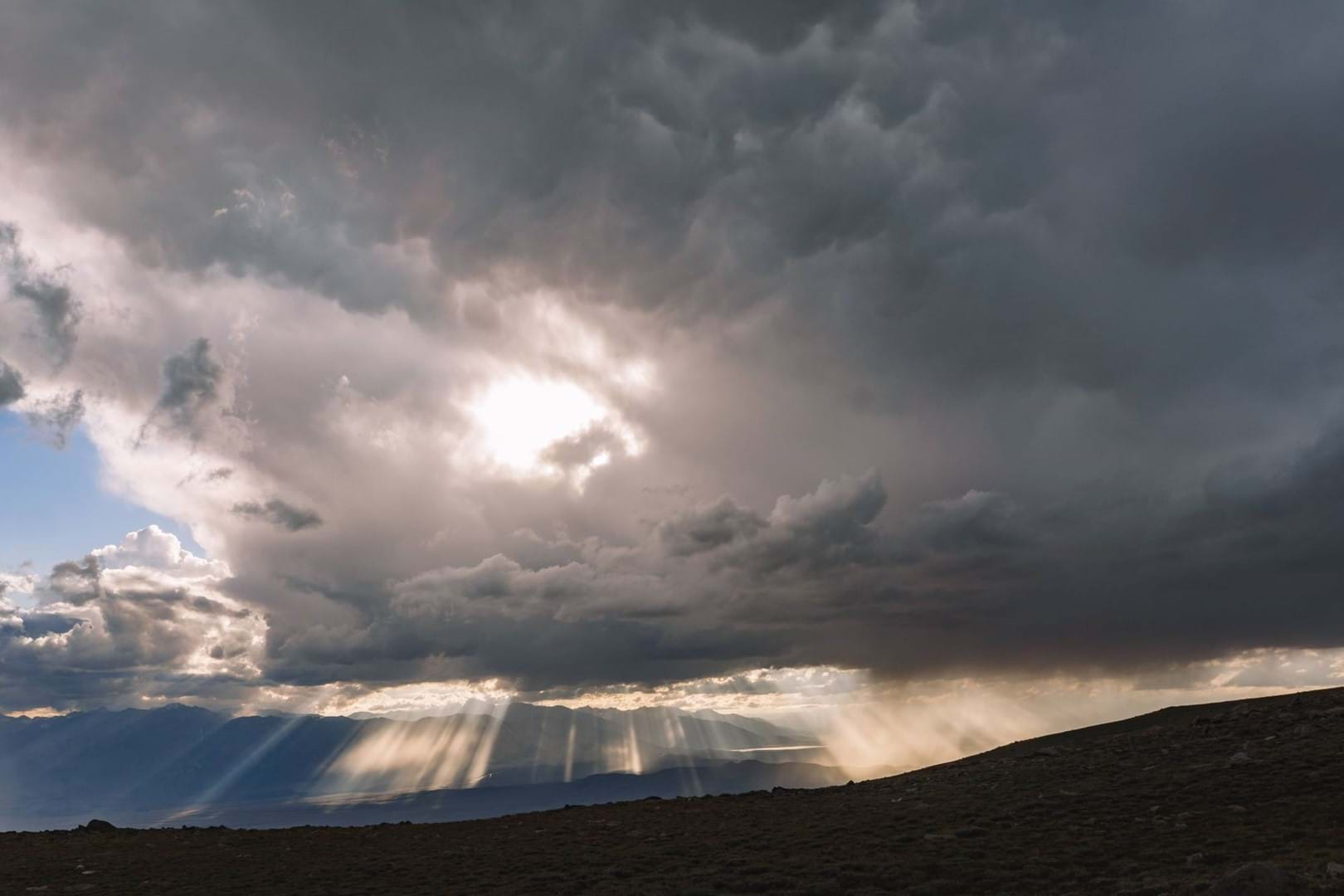
Summiting
We left our bikes behind for the final 500 feet as the trail got progressively chunkier, opting to slowly hike up, clamber over rocks and boulders, and dodge patches of snow. It was a slog to the top, and I felt joy mixed with relief to have made it to the summit. I had thought White Mountain would be straightforward, but the weather forecast shook everything up. It shows that anything goes out here.
Eventful Descent
The descent was a blast, but it wasn't all downhill. There was still 2,500 feet of climbing on the return, which doesn't sound like much on a normal mountain bike ride, but felt torturous after a long day at altitude. And that's when things started going downhill metaphorically ... as we tackled the climbs on the return, dusk turned into night. Suddenly, as if stepping through an invisible barrier into a new world, there was lightning striking all around us. I was appalled. This was not in the forecast and this was exactly where I didn't want to be in a thunderstorm: outdoors and exposed, far from any shelter. Lightning flashed every few minutes in the distance and my heart raced faster than it did on the ascent to the summit. It was only until we finally reached the car that I could take a deep breath and recenter myself. I was shaken, but all the more grateful we made it down to safety.
I knew tomorrow though, I'd wake up and be excited to do it all over again (but without the lightning part). That's the beauty and the curse of type 2 fun. By the next day the memories of suffering have lost their intensity, and what you're left with are the positive memories of the beauty and adventure of it all.
